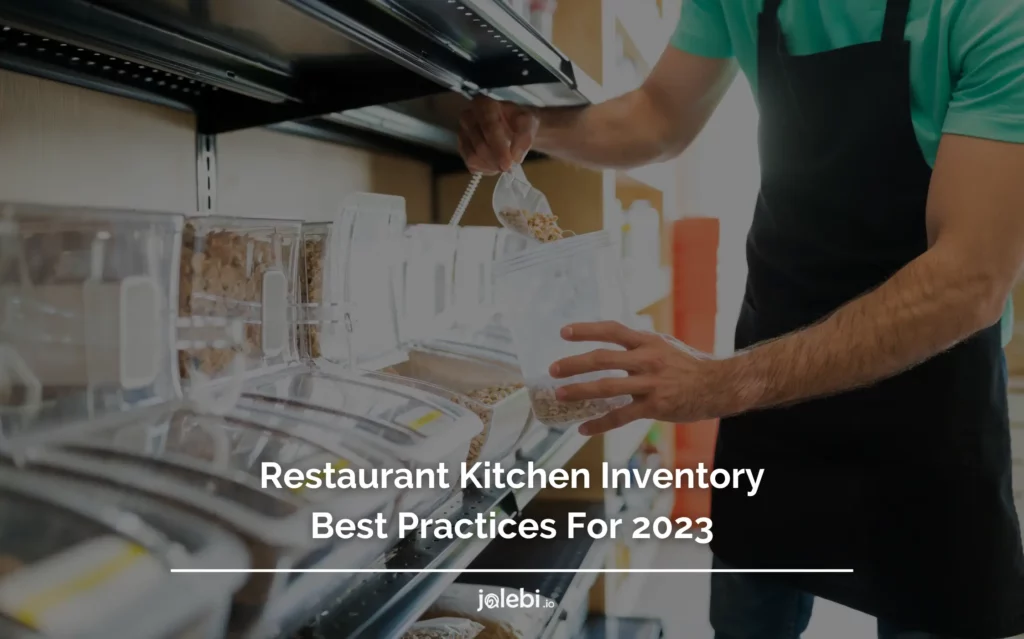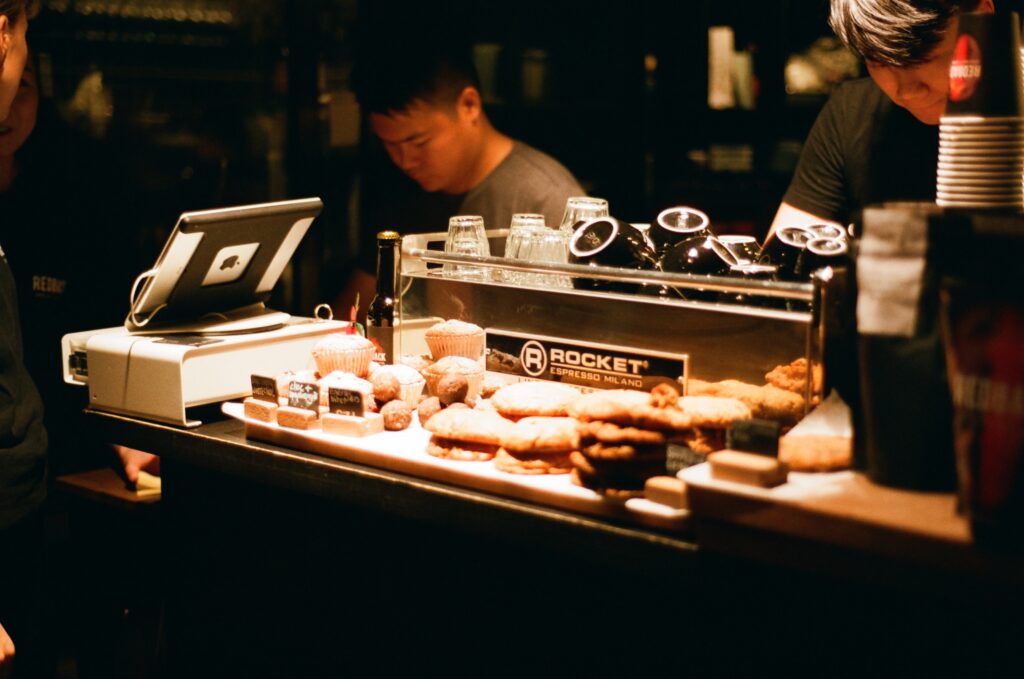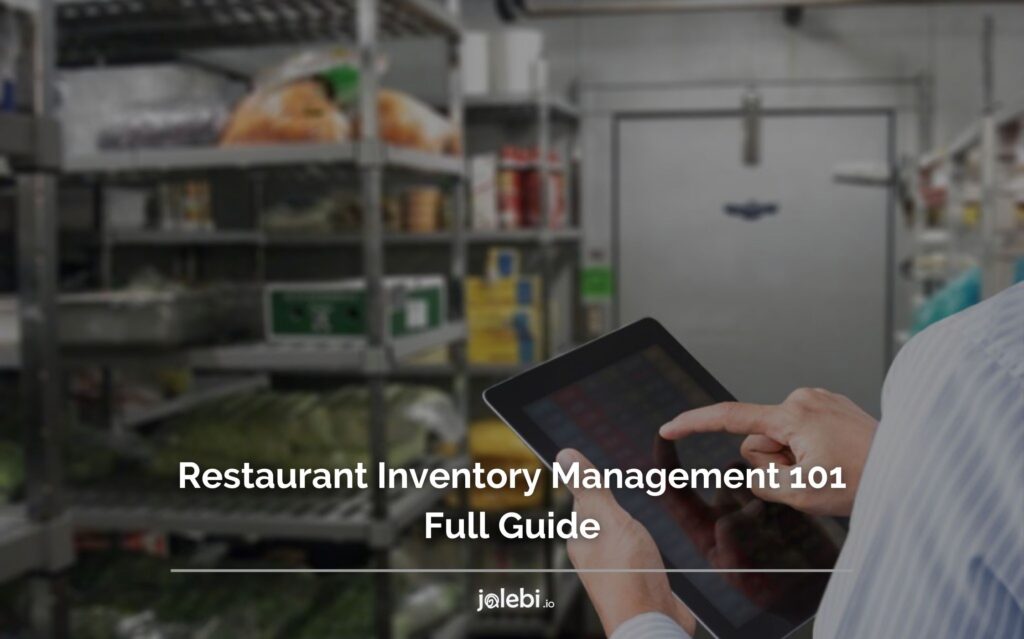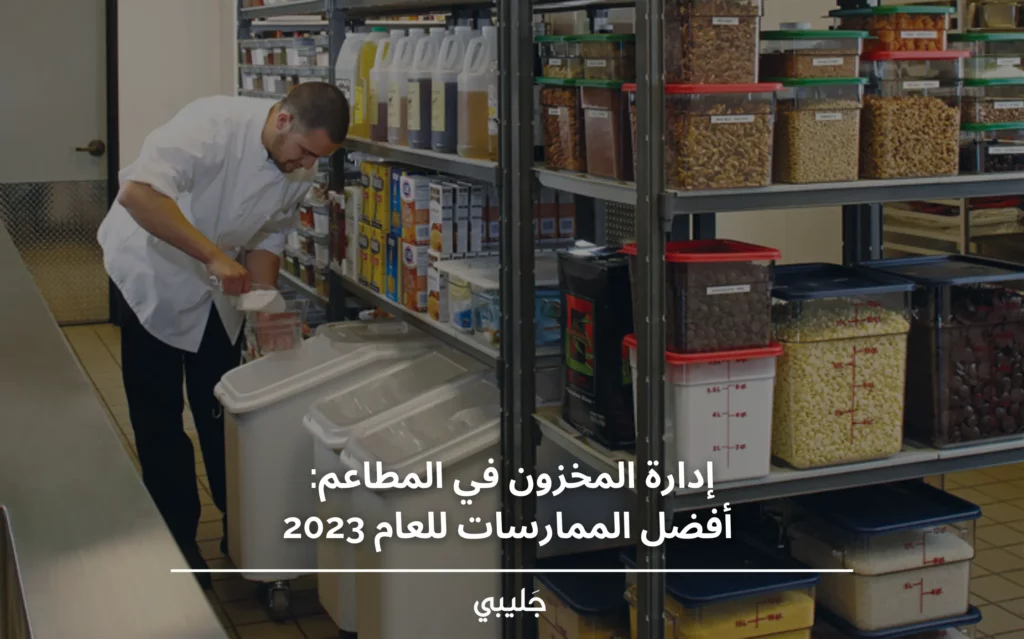Table of Contents

Inventory management can make or break a restaurant business. Many restaurants struggle to manage inventory, which can lead to lost profits and even closure.
An average restaurant spends 28% to 32% of its total sales on food inventory. That’s why incorporating best practices into restaurant kitchen inventory management has become essential.
A well-run restaurant should have a system in place to track inventory and ensure that stock levels are maintained. This system should be designed to meet the specific needs of the restaurant and its menu.
Are you wondering how to manage your restaurant kitchen inventory?
Read this blog post for 6 best practices of restaurant kitchen inventory management and streamline your operations today!
What Is Restaurant Kitchen Inventory?

A restaurant kitchen inventory includes the raw materials needed by a restaurant to prepare the dishes.
It is a crucial part of running a successful food business. Inventory in restaurant business allows you to keep track of all the food and supplies you have on hand, so you can order what you need and avoid waste.
A good restaurant kitchen inventory system will help you to know exactly what you have in stock, so you can plan your menus and make sure you’re using everything efficiently.
Optimizing Restaurant Operations with Effective Restaurant Inventory Tracking
Optimizing restaurant operations is paramount for success in the competitive food industry, and effective restaurant inventory tracking plays a pivotal role in achieving this goal.
Utilizing robust inventory tracking systems and software specifically designed for the restaurant industry, establishments can streamline their inventory management processes. This includes real-time monitoring of stock levels, tracking ingredient usage, and setting automated reorder points.
With accurate insights into inventory, restaurants can make informed decisions, minimize overstocking or understocking, reduce food waste, negotiate better deals with suppliers, and ultimately enhance their overall operational efficiency.
The seamless integration of technology for restaurant inventory tracking empowers businesses to focus more on delivering exceptional dining experiences while maintaining a cost-effective and sustainable operation.
The Importance Of Restaurant Inventory Management

The restaurant industry is a highly competitive and ever-changing business. To keep up with the competition, restaurateurs need to have a well-managed inventory.
An effective inventory management system can help a restaurant save money, time, and resources.
Here are a few reasons that show why inventory management restaurant is essential for every restaurant business.
1- Improved Decision-Making
A well-run restaurant inventory should be able to track stock levels, identify problem areas, and forecast future needs.
Such information is critical in making decisions about purchasing, restaurant inventory planning, and food preparation.
2- Food Wastage And Shrinkage Prevention
A ½ pound of every meal go to waste at restaurants. Inventory management can also help restaurants to avoid waste.
By knowing what is on hand, restaurants can plan to use up older items before they spoil, or work them into specials and promotions. It helps to reduce the amount of food that is wasted.
Additionally, by understanding which menu items are selling well and which ones are not, restaurants can adjust their production accordingly to minimize shrinkage.
3- Cost Control
Controlling the cost of goods sold is one of the most important aspects of running a successful restaurant. Restaurant inventory management is a key tool in controlling these costs.
By keeping track of what food and supplies are on hand, and using that information to plan menus and purchases, restaurants can save money and ensure that they are not overspending on inventory.
How To Control Inventory In Restaurants: Best Practices For 2023

If you’re wondering how to control inventory in restaurants, you’re not alone. It’s a complex task that should not be neglected.
Here are six restaurant kitchen inventory best practices that can help:
1- Keep Track Of What’s Coming In And Going Out
This may seem obvious, but it’s important to know what inventory you have on hand at all times to manage inventory in restaurant business.
Track incoming shipments and make sure each item is accounted for when it arrives. Similarly, keep track of what’s being used in the kitchen and restock accordingly.
If you’re having trouble keeping track of your restaurant’s inventory, jalebi can help.
Our inventory management feature allows you to see your inventory in real-time, so you can always be aware of what you have on hand.
Plus, we integrate your menus with inventory to make it easy to keep track of what needs to be ordered.
So if you’re looking for a way to streamline your inventory management, jalebi is the solution for you.


Save at least 5% on every order you serve with:
- Intuitive Inventory Managment
- Simpler Kitchen Operations
- Dynamic Customer Orders
- Integrated Supplier Managment
2- Leverage Yield Management
Make sure you bring yield management into practice. Yield management is a system that streamlines restaurant inventory by keeping track of what ingredients are used in each dish, how much of each ingredient is used, and when new ingredients need to be ordered.
It ensures that restaurants always have the necessary ingredients on hand, while also minimizing food waste.
By tracking usage patterns, yield management can also help restaurants predict demand and adjust their inventory ordering schedule accordingly. This ensures that restaurants have the right inventory at hand.
3- Utilize Technology
If you’re looking to streamline your restaurant’s inventory management, then investing in inventory management restaurant software is a smart move.
jalebi is one such software that automates every aspect of inventory management, from tracking orders and deliveries to monitoring stock levels in real time.
It not only saves you time and hassle but also ensures that your restaurant always has the supplies it needs on hand.
Plus, with jalebi’s user-friendly interface, you and your staff will be able to quickly and easily get up to speed on using the software.
So why wait? Invest in jalebi today and see how it can help take your restaurant’s inventory management to the next level!
Try jalebi.io FREE For 90 days
Get your demo booked now to get onboarded
4- Stay Organized
If you’re looking for restaurant kitchen best practices, remember that a cluttered kitchen is more likely to result in lost or misplaced items.
Keep your kitchen organized for effective restaurant inventory management. A well-organized kitchen will help you keep track of your inventory and ensure that all your products are accounted for.
Here are a few steps to organize your restaurant’s kitchen.
- First, you’ll want to make sure that all of your shelves and storage areas are clearly labeled and organized.
It will help you know at a glance where everything is supposed to go and will make it easier to put things away in the correct spot.
- Secondly, you’ll want to keep a close eye on expiration dates and make sure that you’re rotated stock accordingly.
It will help ensure that you’re using the oldest products first and avoid any potential waste.
It will also help you identify potential issues with your suppliers and help you resolve them quickly.
5- Train Your Staff Properly
If you’re like most restaurant owners, you know that inventory management is a crucial part of running a successful business. But what you may not realize is that your staff plays a big role in keeping your inventory under control.
That’s why it’s so important to train your staff on proper inventory management techniques.
By teaching them how to track what’s coming in and going out of your restaurant, they can help you avoid costly mistakes and keep your business running smoothly.
Make sure your staff knows how to properly handle and store food items. They should also be aware of the importance of keeping accurate records.
6- Utilize The Blast Freezing Method
The blast freezing method is an effective way to batch-prepare food for a restaurant. This method involves rapidly cooling the food to a very low temperature, which helps to preserve its freshness and flavor.
By utilizing this method, restaurants can effectively manage their inventory and ensure that they always have fresh food on hand. This is especially important for perishable items such as meats and seafood.
Final Thoughts
If you’re looking to boost your restaurant’s success, implementing the best inventory management practices is a great place to start.
Now that you’re familiar with how to control inventory in restaurants, make sure to incorporate these tips into your everyday practices.
Having a well-organized and efficient inventory system in place can help you manage every aspect of your business more smoothly, from food and beverage ordering to stock control and budgeting.
If you’re looking for an inventory management system that will do it all for you while you focus on other aspects of your business, contact jalebi today!
Frequently Asked Questions

1. What are the 4 types of inventory?
- Raw food items
- Work in progress
- Finished dishes
2. What is MRO inventory?
MRO inventory stands for Maintenance, Repair and Operations inventory. This type of inventory is necessary for businesses that perform regular maintenance and repairs on their products or facilities.
MRO inventory typically includes items such as replacement parts, tools, machinery, and other equipment.
While some businesses may choose to keep MRO inventory on-site, others may opt to store it off-site in a warehouse or other storage facility.
The main goal of MRO inventory management is to ensure that the necessary items are available when needed, while also keeping costs low.
3. What is the golden rule for inventory?
The golden rule for inventory is to never have too much or too little on hand. This means that you should always have just enough inventory to meet customer demand.
Having too much inventory can tie up your capital and lead to storage and other costs.
On the other hand, having too little inventory can lead to lost sales and unhappy customers. Therefore, it is important to strike a balance between these two extremes.
The best way to do this is to constantly monitor your sales and adjust your inventory levels accordingly. By following this golden rule, you can ensure that your business runs smoothly and efficiently.
4. How do restaurants manage inventory?
Restaurants manage inventory through inventory tracking software, regular audits, strong supplier relationships, menu engineering, FIFO method, waste tracking, par levels, staff training, and technology integration for efficiency and cost control.
5. How to do inventory for restaurant inventory management system?
To conduct inventory effectively within a restaurant inventory management system, follow these steps:
- Choose the Right Software: Select a suitable restaurant inventory management system that aligns with your restaurant’s needs and requirements.
- Set Up the System: Input all relevant product information such as item names, quantities, units, and any other necessary details into the inventory management software.
- Establish Par Levels: Determine the optimal stock levels (par levels) for each item based on historical usage, demand patterns, and supplier lead times.
- Regular Inventory Counts: Conduct regular physical inventory counts to compare the actual on-hand quantities of items with the recorded amounts in the system.
- Update Inventory Records: After each inventory count, update the inventory records in the system to reflect the correct stock levels and make adjustments if necessary.
- Monitor Usage and Reordering: Monitor item usage, set up automated reorder notifications or reminders for low-stock items, and initiate orders with suppliers accordingly.
- Implement First-In, First-Out (FIFO): Adhere to the FIFO method to ensure older stock is used before newer stock, minimizing the risk of food waste.
- Train Staff: Train staff on how to accurately use the inventory management system, including entering data, conducting counts, and utilizing the system for efficient inventory management.










